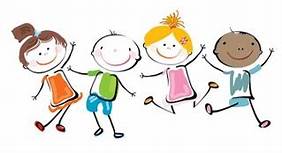The Importance of Social-Emotional Learning in pre-school Curriculum:
During my time in my Head start classroom this far, I noticed that social-emotional learning is promoted throughout the day. This includes identifying and managing your own feelings and understanding how others feel. As Preschool is a child’s first experience in a learning setting, it is important to build a strong foundation in which children feel confident and eager to learn!
According to Springer.com, Social-Emotional Learning (SEL) curricula in preschools may prevent emotional and behavioral issues. If we teach students how to monitor their own emotions, he teaches them to make better choices when reacting to a problem. This could be beneficial in school as children often feel frustrated when it comes to school work or working to achieve a certain skill. So, what not teach them social-emotional strategies at a young age?

How can SEL be Incorporated into your classroom?
There are many ways to talk to your students about how they can regulate their emotions. Some ways may include using books, a calming corner, and other manipulatives. Approaches to teaching SEL are very wide and open. Specifically, for pre-school, teachers can ask questions such as, “How are you feel?”, “How does that make you feel?”, or “What can you do to feel better?”. In my placement this semester, I hear a lot of those phrases, as well as teachers connecting to their students by saying, “Yeah, sometimes I feel like that too. But its okay because we can take a break.”. In this classroom, there is a calming cube, which is a space where the children can sit in when they are feeling upset or angry. There are also many manipulatives that help them calm down. When they are ready, they go back to the carpet and continue with their learning. Other strategies I have seen, include; yoga, meditation jars, feeling check ins, and fidgets such as stress balls. All of this could easily be incorporated into a daily routine.
Why Preschool?
When we do this routine with young children, it allows them to start to self-regulate. Soon after, they will not have to be reminded to think of how they feel. Students will start to do these things on their own, which will overall prevent the likeliness of an outburst due to frustration. With this skill set, students will also be prepared for future problems.

Conclusion
Social-emotional learning has many benefits that include; gaining better understanding of one self, gaining empathy for peers, and learning to work through problems. It is also said that student-teacher relationships are bettered. Overall, this concept is easy to incorporate each day and comes with many benefits.
